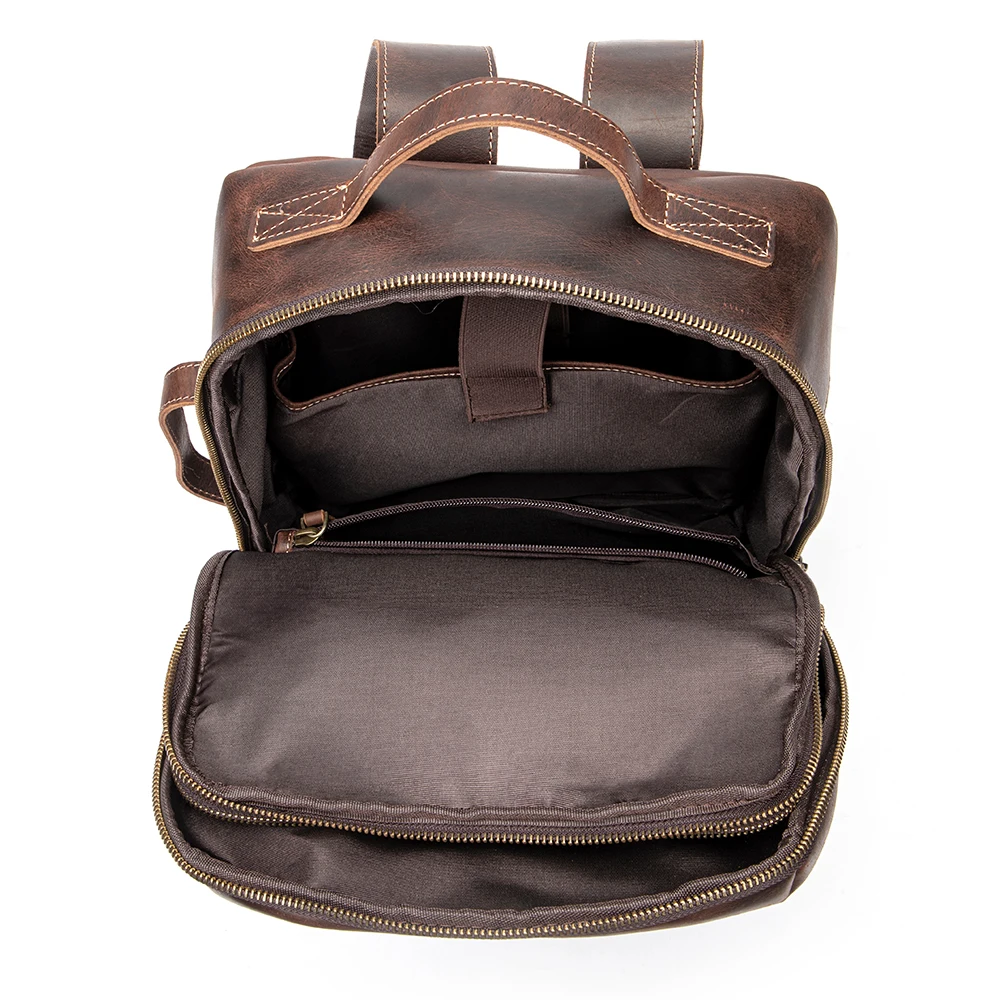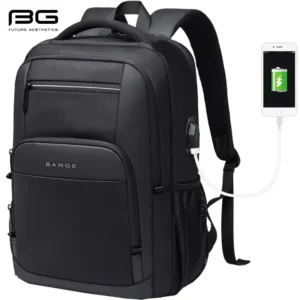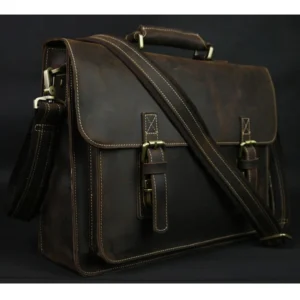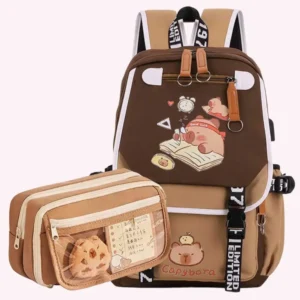The Versatility of Premium Leather Rucksacks
A well-crafted leather rucksack stands as one of the most versatile investments you can make for your daily carrying needs. Unlike trendy bags that quickly go out of style, a quality leather backpack evolves with you, serving multiple purposes while developing a unique character over time. The beauty of premium leather lies in its adaptability – the same bag can transition seamlessly from workplace to weekend adventures, gaining personality with each use.
Understanding which features matter most for your specific needs can make all the difference in finding a leather rucksack that truly serves you. Whether you’re navigating busy city streets during your daily commute, packing for a weekend getaway, exploring outdoor trails, or simply wanting to make a style statement, the right combination of features transforms a simple bag into an indispensable companion.
The journey to finding your ideal leather rucksack begins with choosing the right leather rucksack based on your primary activities. Full-grain leather, the highest quality available, develops a beautiful patina that tells the story of your adventures, becoming more attractive with age. This natural material offers an unmatched combination of durability and elegance that synthetic alternatives simply cannot achieve.
As we explore the different categories of leather rucksacks, you’ll discover how specific designs cater to particular needs. From business professionals to frequent travelers, casual adventurers to fashion enthusiasts, there’s a perfect leather configuration waiting for you. The various leather backpack styles each offer unique advantages depending on your lifestyle requirements.
Essential Leather Rucksack Features for Daily Commute & Work
For daily commuters and professionals, a leather rucksack needs to strike the perfect balance between functionality and sophistication. The ideal work backpack presents a polished appearance while efficiently organizing your essentials throughout demanding workdays.
Key features to look for in a professional leather rucksack include:
- A streamlined silhouette that maintains a professional aesthetic even when fully packed
- Padded shoulder straps with ergonomic design to distribute weight evenly
- A breathable back panel that prevents uncomfortable sweating during commutes
- Quick-access pockets for transit cards, keys, or phone
- Premium hardware that makes a subtle statement while ensuring durability
- A dedicated laptop compartment with appropriate padding
- Interior organization that keeps small items accessible
The best work rucksacks offer subtle professionalism without sacrificing functionality. Many professionals prefer men’s leather work backpacks that offer refined designs specifically tailored to business environments. These bags typically feature cleaner lines and more subdued hardware than their casual counterparts.
Weight distribution becomes particularly important for daily commuters who may carry their bag for extended periods. Look for padded shoulder straps with proper width (at least 2 inches or 5 cm) to prevent digging into your shoulders. A sternum strap can provide additional stability during crowded commutes or when rushing to catch public transportation.
Protective Technology Compartments
Modern professionals rarely travel without their electronic devices, making protective compartments essential in today’s work rucksacks. A properly designed laptop sleeve should feature adequate padding on all sides, particularly the bottom, where impact risks are highest.
Quality leather rucksacks typically include dedicated laptop compartments with approximately 0.5-0.75 inches (1.3-1.9 cm) of padding to absorb shocks and protect devices from accidental bumps. The best designs incorporate a suspended pocket system that prevents your laptop from hitting the ground if you set the bag down too forcefully.
Beyond basic protection, look for these technology-friendly features:
- Microfiber lining that prevents scratches on screens
- Secure closure systems that prevent devices from sliding out
- Cable management solutions to prevent tangling
- Separate tablet compartment with appropriate dimensions
- Strategically placed pockets for chargers and accessories
For maximum device protection, leather laptop backpacks offer specialized features designed specifically for electronics. These designs often include reinforced handles for secure carrying and easy retrieval of your devices from tight spaces like under airplane seats.
Business-Ready Organization Systems
Effective organization transforms a simple bag into an efficient work companion. A well-designed business rucksack incorporates thoughtful organizational elements that keep essentials accessible without requiring you to rummage through your belongings.
The most useful organizational features include:
- A front admin panel with dedicated slots for pens, business cards, and small accessories
- Internal dividers that separate documents and prevent folding or creasing
- A key leash to prevent keys from disappearing in the depths of your bag
- Strategically placed small pockets for items you access frequently
- Hidden security pockets for valuable items like wallets or passports
- Expandable document compartments for folders or notebooks
The placement of these organizational elements matters as much as their presence. Quality designs position frequently accessed items in locations you can reach without fully removing the bag from your shoulders or setting it down. For those who need to transition between carrying styles, leather briefcase backpacks offer the versatility of both a professional handheld briefcase and a comfortable rucksack in one sophisticated package.
Travel-Optimized Leather Rucksack Features
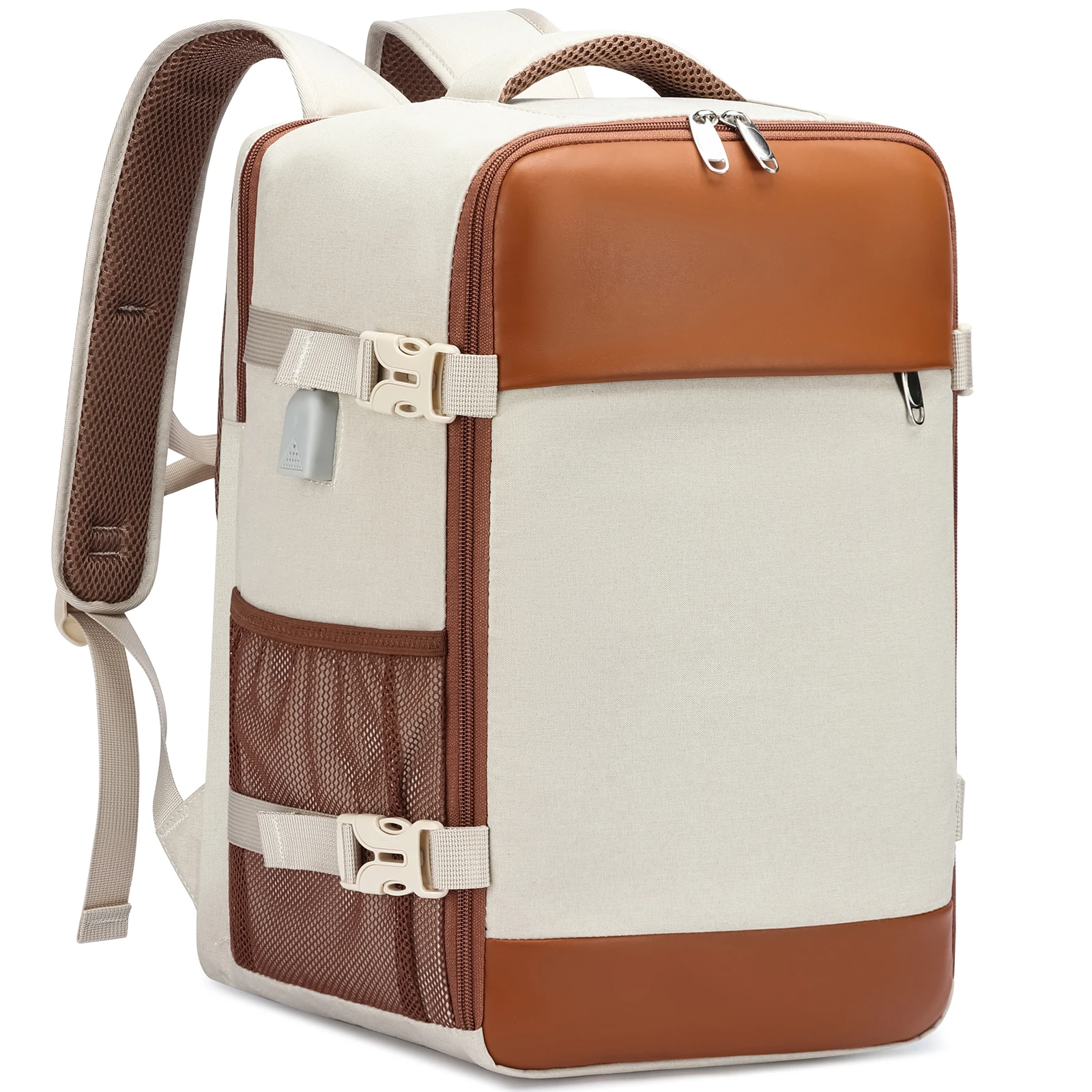
When your leather rucksack needs to serve as your travel companion, capacity and organization take center stage. Travel-focused designs balance spaciousness with practical features that make navigating airports, train stations, and hotels more efficient.
The ideal travel rucksack typically offers:
- Capacity between 20-30 liters (1220-1830 cubic inches) – enough for a weekend trip
- Dimensions that comply with carry-on requirements (typically under 22 × 14 × 9 inches or 56 × 36 × 23 cm)
- A trolley sleeve that slides over rolling luggage handles
- Compression straps to secure and stabilize contents
- Enhanced comfort features for extended carrying periods
- Strategic pocket placement for travel documents and essentials
While daily commuter bags prioritize a slim profile, travel rucksacks need adequate depth to accommodate clothing and toiletries. Quality leather travel backpacks offer this expanded capacity without becoming unwieldy, maintaining the sophisticated aesthetic that makes leather so appealing.
The best travel designs also consider the practical challenges of moving through transportation hubs. Features like side-access compartments allow you to retrieve items without removing the bag from overhead compartments, while back panel security pockets keep valuables safe against your body when navigating crowded areas.
Strategic Compartmentalization for Travelers
Effective packing starts with intelligent compartmentalization. Travel-oriented leather rucksacks employ specialized compartment designs that maximize space utilization while keeping contents organized and accessible.
The most practical compartmentalization features include:
- Clamshell opening design that allows the bag to open flat like a suitcase
- Separate shoe compartments (approximately 12 × 5 × 4 inches or 30 × 13 × 10 cm)
- Compression straps or panels to secure clothing and prevent shifting
- Mesh dividers that allow visibility of contents while maintaining separation
- Waterproof or lined pockets for toiletries or potentially leaking items
These thoughtful divisions transform a simple bag into an efficient packing system. Understanding the guide to selecting travel rucksacks can help you identify the most practical compartment configurations for your specific travel habits.
The way compartments open matters significantly for travelers. Top-loading designs offer security but make accessing items at the bottom difficult, while panel-loading or clamshell designs provide greater visibility and access to all contents simultaneously.
Travel Security & Convenience Features
Travel contexts present unique security challenges that quality leather rucksacks address through specialized design elements. From pickpocket deterrence to organized document storage, these features provide peace of mind during your journeys.
Essential security and convenience features include:
- Lockable zipper pulls that accept small travel locks
- Hidden compartments positioned against your back or within inner linings
- RFID-blocking pockets for credit cards and passports
- Water-resistant exterior pockets for quick access to travel documents
- Discreet exterior access points that aren’t obvious to casual observers
- Sturdy hardware resistant to tampering or forced entry
The placement of security features requires careful balance – they must be accessible enough for your convenience but not easily reached by others. Quality designs position valuable-item compartments close to your body while placing less critical items in more accessible exterior pockets.
Leather Rucksack Features for Outdoor & Casual Use
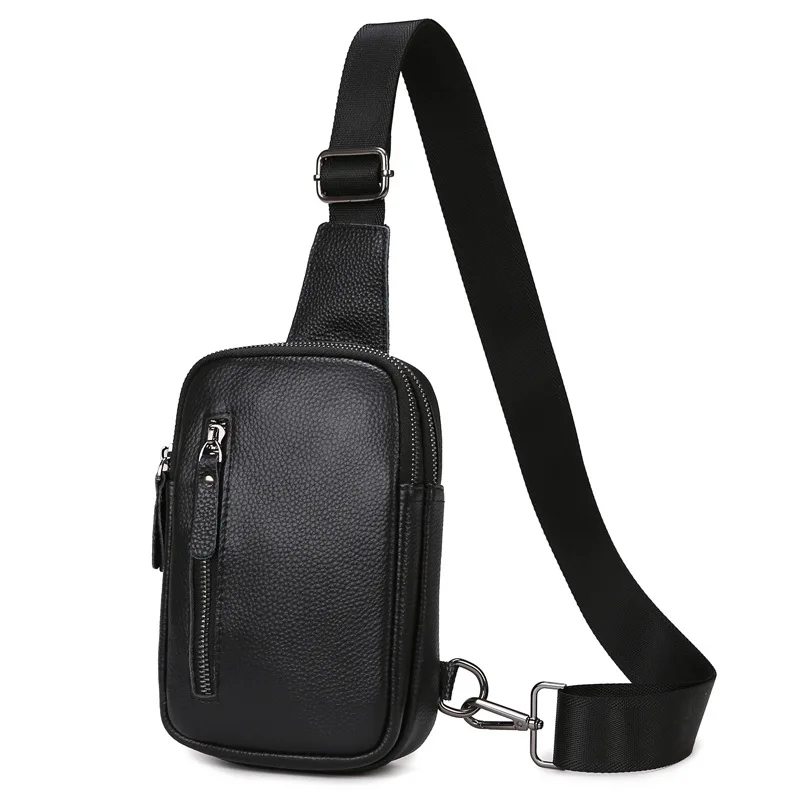
When exploring trails or navigating casual weekend activities, your leather rucksack needs enhanced durability and practical features that stand up to more demanding conditions. Outdoor-oriented designs emphasize resilience while maintaining the timeless appeal of quality leather.
Key features for outdoor and casual leather rucksacks include:
- Reinforced stress points that prevent tearing under heavier loads
- Thicker leather (typically 2-2.5mm or 5-6oz) for improved durability
- Strategic padding for comfort during extended wear
- External attachment points for water bottles or additional gear
- Weather-resistant treatments or natural water-repelling properties
- Higher load capacity support (typically 15-25 lbs or 6.8-11.3 kg)
Outdoor-ready designs strike a thoughtful balance between ruggedness and refinement. While they incorporate practical features for adventure, they maintain the sophisticated aesthetics that distinguish leather from purely technical materials. The vintage and modern leather backpack features often combine to create the perfect balance for outdoor enthusiasts who appreciate heritage style with contemporary functionality.
The padding system becomes particularly important for outdoor use, where you might wear your rucksack for extended periods. Look for wider, contoured shoulder straps and a structured back panel that promotes airflow and prevents uncomfortable sweating during active use.
Weather-Ready Construction
Quality leather possesses natural weather resistance that, when properly maintained, allows it to withstand occasional exposure to the elements. Full-grain leather naturally develops water resistance over time as oils and waxes build up in the material, creating a protective barrier.
Weather-ready leather rucksacks typically feature:
- Treated full-grain leather with enhanced water resistance
- Waxed thread stitching that prevents water penetration at seams
- Strategic seam placement that minimizes water entry points
- Non-corroding hardware (brass or stainless steel) that withstands moisture
- Interior waterproof linings that provide secondary protection
These construction elements work together to create a rucksack that maintains its integrity even when exposed to light rain or unexpected weather conditions. Full-grain leather backpacks offer the best natural weather resistance due to their intact grain structure, which provides an inherent barrier against moisture.
While no leather bag is completely waterproof without sacrificing its breathability and natural characteristics, quality construction significantly improves weather resilience. Regular application of leather conditioner or wax treatments can further enhance this natural protection.
Fashion-Forward Leather Rucksack Features
When style takes precedence, certain leather rucksack features elevate a simple bag into a fashion statement. These design elements focus on aesthetic appeal while maintaining practical functionality.
Fashion-oriented leather rucksacks typically showcase:
- Distinctive silhouettes that complement different personal styles
- Premium hardware with unique finishes (antique brass, brushed nickel)
- Thoughtfully selected leather with appealing grain patterns
- Strategic color choices that develop attractive patina
- Signature design elements that create visual interest
- Clean lines and proportional dimensions that create harmony
The most appealing leather rucksacks often feature cognac, chestnut, or deep black leathers that provide versatility across different outfits and seasons. These classic colors develop rich patina that enhances their visual appeal over time.
Hardware serves as both functional necessity and design accent. Quality fashion rucksacks feature solid brass or nickel hardware with distinctive finishes that complement the leather tone. These metal accents often become signature elements that distinguish particular designs. For timeless appeal, many fashion enthusiasts prefer vintage leather backpacks that combine heritage design elements with practical modern features.
Leather Patina Development & Character
One of the most distinctive characteristics of quality leather is its ability to develop a patina – the subtle changes in color, texture, and sheen that occur with use and exposure to the environment. This natural aging process transforms each leather rucksack into a unique piece that reflects its journey.
The patina development process typically involves:
- Darkening of high-touch areas like handles and straps
- Subtle color deepening across the surface (usually beginning within 3-6 months)
- Development of a gentle sheen from natural oils in the leather
- Softening of the leather’s texture as it molds to your use patterns
- Creation of unique color variations based on exposure to sunlight and elements
This character development represents one of leather’s most treasured qualities – unlike synthetic materials that degrade with age, quality leather improves visually over time. The oils from your hands, exposure to sunlight, and general use all contribute to this beautiful evolution.
Different leather types develop patina at varying rates and with different characteristics. Full-grain leather shows the most dramatic and appealing patina development, while heavily treated leathers may show minimal changes over time.
14 Inch Leather Laptop Backpack, Brown Leather Backpack, Men's Leather Backpack, Vintage Leather Backpack
Price range: $177.28 through $199.12 Select options This product has multiple variants. The options may be chosen on the product pageCarry On Leather Backpack, Roll Top Leather Backpack
Price range: $77.76 through $96.48 Select options This product has multiple variants. The options may be chosen on the product pageDesigner Men's Backpack, Men's Leather Laptop Backpack, Men's Leather Work Backpack
Price range: $158.04 through $160.04 Select options This product has multiple variants. The options may be chosen on the product page15 Inch Leather Laptop Backpack, Leather Briefcase Backpack
$332.96 Select options This product has multiple variants. The options may be chosen on the product page17 Inch Leather Laptop Backpack, Men's Leather Travel Backpack, Men's Leather Work Backpack
Price range: $106.28 through $143.88 Select options This product has multiple variants. The options may be chosen on the product page- Price range: $80.72 through $108.04 Select options This product has multiple variants. The options may be chosen on the product page
Essential Quality Features for All Leather Rucksacks
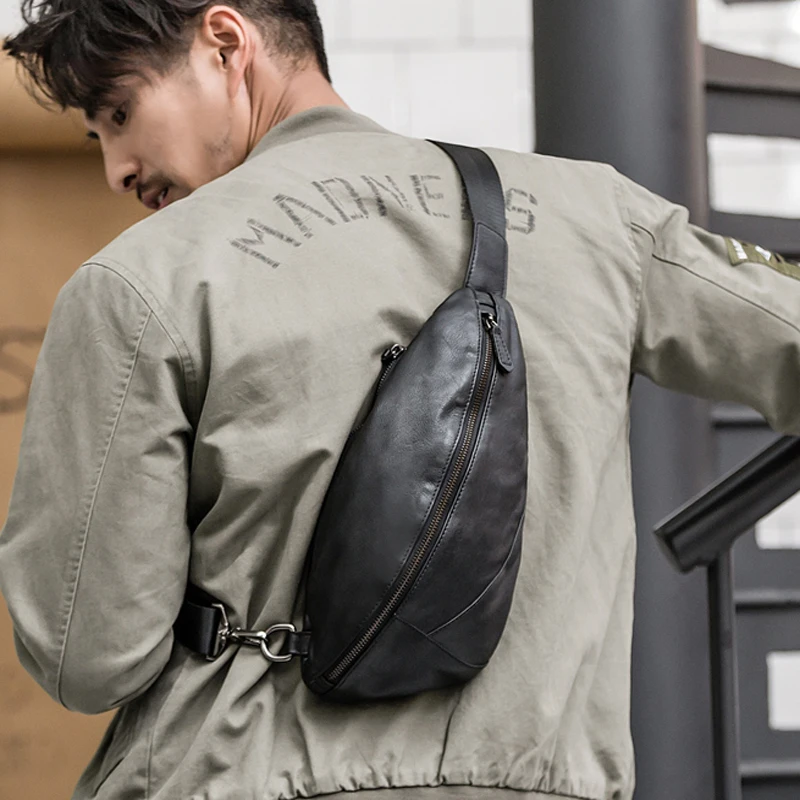
Regardless of your specific use case, certain quality indicators apply to all premium leather rucksacks. These fundamental features ensure longevity, functionality, and value retention regardless of how you use your bag.
Essential quality markers include:
- Premium leather selection (ideally full-grain or top-grain)
- Reinforced stitching at stress points
- Quality hardware that resists breakage and corrosion
- Thoughtful interior lining that balances durability with aesthetics
- Clean edge finishing that prevents fraying or unraveling
- Consistent craftsmanship throughout the entire bag
Understanding leather types for durable bags helps you make informed decisions about material quality. The leather type forms the foundation of your rucksack’s durability, determining how it will wear and age over time.
Quality stitching serves as another critical indicator of craftsmanship. Premium leather rucksacks feature tight, even stitching with reinforcement at stress points. Double or cross-stitching often appears at handles, strap attachments, and other high-tension areas.
Hardware quality directly impacts both functionality and longevity. Solid brass, stainless steel, or high-quality zinc alloy hardware resists breaking, bending, and corrosion far better than lightweight or plated alternatives.
Premium Leather Types & Their Characteristics
The type of leather used in your rucksack significantly influences its durability, appearance, and aging characteristics. Understanding these differences helps you select a bag that meets your specific requirements.
| Leather Type | Durability | Patina Development | Thickness | Best For |
|---|---|---|---|---|
| Full-Grain | Excellent | Pronounced, beautiful | 2-2.5mm (5-6oz) | Long-term investment, outdoor use |
| Top-Grain | Very Good | Moderate, attractive | 1.8-2.2mm (4-5oz) | Professional use, balanced weight |
| Genuine Leather | Fair | Minimal | Variable | Budget options, lighter weight |
Full-grain leather represents the highest quality option, featuring the complete grain layer with all natural markings and character. This unaltered surface creates a distinctive appearance while providing maximum durability and the most beautiful patina development. Understanding the optimal leather thickness for backpacks is essential for balancing durability with practical weight considerations.
Top-grain leather undergoes light sanding to remove imperfections, creating a more uniform appearance. While slightly less durable than full-grain, it still offers excellent longevity and develops attractive patina over time.
Genuine leather, despite its authentic-sounding name, represents lower quality options made from the remaining layers after top-grain leather is removed. While still real leather, it lacks the durability and character of higher grades.
Craftsmanship Indicators in Quality Rucksacks
Superior craftsmanship transforms quality materials into a rucksack that will serve you reliably for many years. Knowing how to identify proper construction techniques helps you invest in bags that truly deliver long-term value.
Key craftsmanship indicators include:
- Even stitching with consistent tension (typically 5-7 stitches per inch)
- Double-stitching or reinforcement at stress points
- Clean edge finishing (burnished or painted to prevent fraying)
- Properly backed hardware with reinforced attachment points
- Carefully aligned patterns and panels
- Attention to detail in small components
Quality construction extends beyond visible elements to internal components that contribute to structure and durability. Reinforced backing materials at attachment points prevent tearing under load, while thoughtful interior design creates functionality without unnecessary bulk.
Hardware attachment methods particularly reveal craftsmanship quality. Premium rucksacks secure hardware with multiple layers of leather or reinforced backing plates that distribute force across a wider area, preventing the leather from tearing when the bag is heavily loaded.
Proper Maintenance for Leather Rucksack Longevity
A quality leather rucksack represents a significant investment that, with proper care, will serve you reliably for many years. Regular maintenance not only preserves appearance but extends functional lifespan significantly.
Essential maintenance practices include:
- Regular cleaning with appropriate leather cleaner (every 1-2 months)
- Conditioning to replace natural oils (every 3-6 months)
- Proper storage in cool, dry environments when not in use
- Immediate attention to spills or stains
- Periodic waterproofing treatment for outdoor-use bags
- Professional restoration for significant damage
The frequency of conditioning depends significantly on your climate and usage patterns. Leather in dry environments requires more frequent conditioning, while humid conditions may require less. Regardless of climate, conditioning before and after periods of storage helps prevent cracking and maintains leather flexibility.
Proper storage significantly impacts longevity. Store your rucksack away from direct sunlight, extreme temperatures, and high humidity. Using a dust bag provides additional protection, while stuffing the bag lightly with acid-free tissue helps maintain its shape. Specific leather commuter backpack care tips can help daily users maintain their bags despite frequent handling.
Essential Leather Care Products & Techniques
The right care products and application techniques can dramatically extend your leather rucksack’s lifespan while enhancing its appearance.
Essential leather care products include:
- pH-neutral leather cleaner that removes dirt without stripping natural oils
- Leather conditioner appropriate for your specific leather type
- Leather protectant or waxes for weather resistance
- Soft cloths for application and buffing
- Horsehair brush for gentle cleaning
When applying products, less is typically more. Small amounts worked gently into the leather provide better results than heavy application, which can oversaturate and potentially damage the material. Always test products on an inconspicuous area first to ensure compatibility with your specific leather.
For cleaning, use circular motions with minimal pressure, focusing on removing surface dirt without scrubbing aggressively. Conditioning should follow after the leather has completely dried from cleaning, typically applying a thin layer and allowing it to absorb naturally before buffing away excess.
Natural products like beeswax, neatsfoot oil, and lanolin-based conditioners often provide excellent results without harsh chemicals that might damage the leather over time. These traditional formulations have proven their effectiveness through centuries of leather care.
How to Choose Your Perfect Leather Rucksack
Selecting the ideal leather rucksack requires balancing your specific needs with quality considerations and investment value. This thoughtful approach ensures your purchase will serve you well across multiple scenarios.
Consider these factors when making your selection:
- Primary use case (daily commute, travel, outdoor, fashion)
- Secondary scenarios where you’ll use the rucksack
- Required capacity for your typical load
- Must-have organizational features for your essentials
- Your personal aesthetic preferences
- Budget expectations for quality leather ($200-500)
- Anticipated lifespan and value retention
Start by honestly assessing how you’ll use the bag most frequently. If 80% of your use involves commuting with a laptop and documents, prioritize professional features while ensuring the bag can accommodate occasional weekend use. Conversely, if travel is your primary need, focus on capacity and security while maintaining a style suitable for casual professional settings.
When evaluating options, examine both functionality and construction quality. Premium rucksacks typically feature consistent stitching, quality hardware, reinforced stress points, and clean interior finishing. Avoid bags with uneven stitching, lightweight hardware, or unfinished edges, as these indicate potential durability issues. For detailed guidance, review what to look for in a leather rucksack before making your final selection.
Frequently Asked Questions About Leather Rucksacks
Are Leather Rucksacks Suitable for Rainy Conditions?
Quality leather rucksacks offer natural water resistance that protects contents during light rain or brief exposure to wet conditions. Full-grain leather particularly excels in this regard, as its tight fiber structure naturally repels water. However, no untreated leather is completely waterproof.
For improved water resistance:
* Apply a quality leather waterproofing product every 3-6 months
* Allow wet leather to dry naturally (24-48 hours) away from direct heat
* Pay special attention to seams and hardware attachment points
* Consider a dedicated rain cover for extended exposure
After exposure to significant moisture, proper drying becomes essential. Place the bag in a well-ventilated area away from direct heat sources, stuff it lightly with newspaper or towels to maintain shape, and allow it to dry completely before storing. Once dry, apply conditioner to restore oils that may have been depleted during the wetting and drying process.
Different leather types offer varying degrees of water resistance. Full-grain leather provides the best natural protection, while heavily treated or thinner leathers may require additional waterproofing. For all-weather use, browse leather rucksack options that feature enhanced weather protection features.
How Does Leather Compare to Synthetic Materials for Backpacks?
Leather offers distinct advantages and considerations compared to synthetic backpack materials:
- Durability: Quality leather typically outlasts synthetic materials by many years
- Aging: Leather develops attractive character over time, while synthetics often look worn
- Weight: Leather is generally heavier than modern synthetic alternatives
- Maintenance: Leather requires regular care, while many synthetics are low-maintenance
- Environmental impact: Full-grain leather from responsible sources can be more sustainable than petroleum-based synthetics
- Cost: Quality leather represents a higher initial investment but often better long-term value
The weight difference represents one of the most noticeable contrasts. A typical leather rucksack might weigh 3-4 pounds (1.4-1.8 kg) when empty, while a comparable synthetic bag might weigh 1-2 pounds (0.45-0.9 kg). This additional weight comes with compensating benefits in durability and aesthetic appeal.
How Long Should a Quality Leather Rucksack Last?
With proper care and maintenance, a premium full-grain leather rucksack should provide at least 10-15 years of regular use. Many well-maintained leather bags continue serving their owners for decades, becoming cherished heirlooms that develop unique character over time.
Factors affecting longevity include:
* Leather quality (full-grain offers the longest lifespan)
* Construction techniques and hardware quality
* Frequency and conditions of use
* Proper maintenance and storage practices
* Weight carried relative to bag design
The break-in period typically spans 2-4 weeks of regular use, during which the leather softens and begins conforming to your carrying patterns. This process contributes to both comfort and the development of the bag’s unique character.
Unlike synthetic materials that degrade with age, quality leather often becomes more appealing over time. The natural aging process enhances visual interest while maintaining structural integrity when properly maintained.

